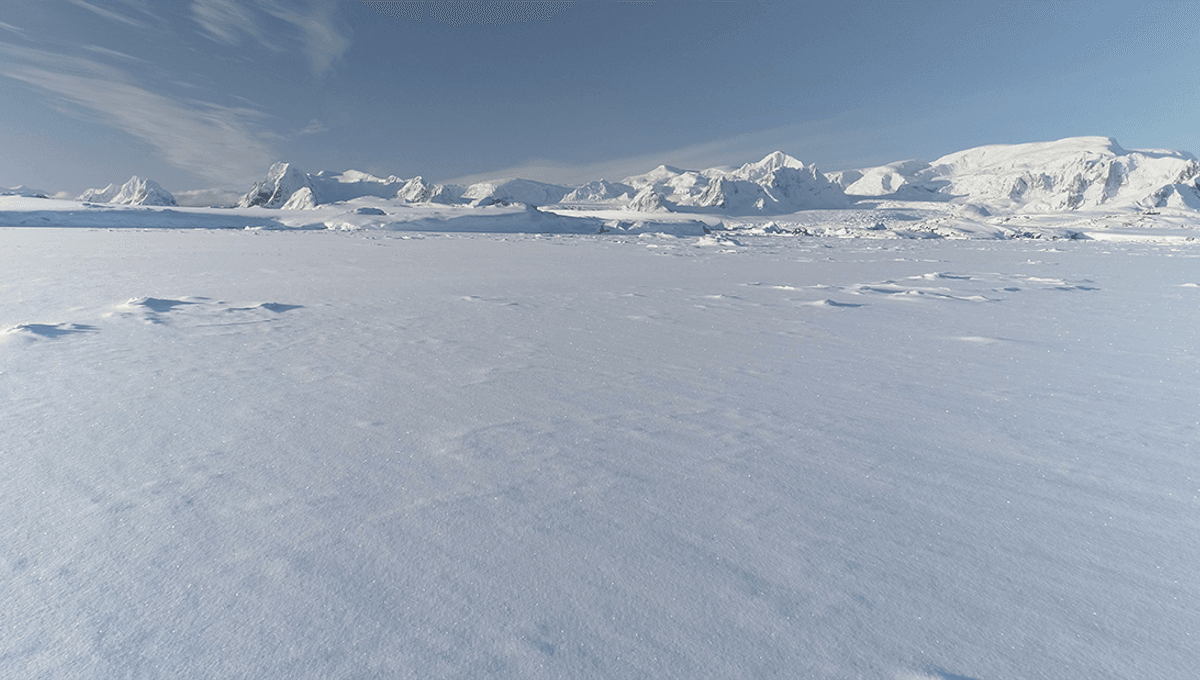
Other than at a research station or occasional expedition, humans have never settled in Antarctica. While the evidence suggests the continent was once home to rainforests, swamps, and dinosaurs, by the time ancient humans made their way out of Africa, it was too cold and remote to support human habitation without modern equipment.
There are suggestions that Polynesian explorer Hui Te Rangiora (sometimes Ui-te-Rangiora), described in Māori legend, reached the continent in the seventh century CE. That legend describes the seafarer reaching “a foggy, misty, and dark place not seen by the sun” and describes a bare, icy environment, leading researchers to suggest that they may have traversed Antarctic waters, and even seen the continent.
But the next confirmed sighting of Antarctica didn’t come until 1820, as Russian explorer Thaddeus von Bellingshausen described seeing an “ice shore of extreme height” during an expedition to the Antarctic. In the following decades and century, humans explored the continent further, sometimes at the cost of their lives.
Which is why it’s so weird that, in the 1980s, a scientist discovered human remains in Antarctica of a young woman thought to have died between 1819 and 1825.
“On January 7th, 1985, at 16:35, during the process of collecting marine refuse on Yámana Beach of the Cape’s coast, I made the first discovery of human remains: a cranium half buried in the rocky sandy sector of the beach,” Daniel Torres Navarro, Professor of Biology and Natural Sciences at the University of Chile explained of his discovery in a paper.
“Only the parieto-occipital portion was visible, while the frontal, naso-maxillar and parietal portions were buried in the sand. The surface of the exposed area was greenish due to the proliferation of microalgae. Upon retrieval, it was, nevertheless, still possible to recover two maxillar fragments with some well preserved teeth. A thorough search failed to produce the two central incisors, nor did a further search in the surrounding area lead to the discovery of other human remains (mandible, vertebrae, etc.).”
Initial examinations showed that the cranium belonged to a young individual, and most likely a female. But you don’t find human remains on Antarctica and leave it at that. Torres Navarro and others returned to investigate the site and nearby over the years, finding further bones including a femur at a nearby site. The team presumed any further skeletal remains to be “widely dispersed” over the Yamana Beach.
According to the team’s analysis, she was likely from Chile, and died sometime between 1819 and 1825. So, how did she get there, perhaps even beating Thaddeus von Bellingshausen to sighting the continent?
“Turning to the possible origins of these human remains, I would like to put forth the hypothesis that, for unknown reasons, the woman could have been a member of a group of 19th-century sealers who abandoned her at the site,” Torres Navarro explains in his discussion.
“Another possibility is that she would have died on board of a vessel and been buried into the sea, as was the custom of the days. This could have caused the body to be transported by the action of currents and storms to the beach, where it was consumed by carrion eaters (giant petrel, Macronectes giganteus; skuas, Catharacta lonnbergi; kelp gull, Larus dominicanus and sheathbill, Chionis alba). The birds could have separated the cranium from the rest of the body, leading to the loss of the mandible and missing teeth. The bones could then have been dispersed over a wide area and buried under sand.”
“Whatever the chain of events, only those remains here mentioned have been found up to this day.”
Source Link: "For Unknown Reasons": Mystery Of The Oldest Human Remains Ever Found In Antarctica